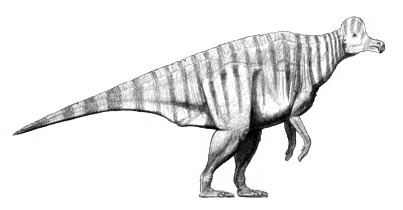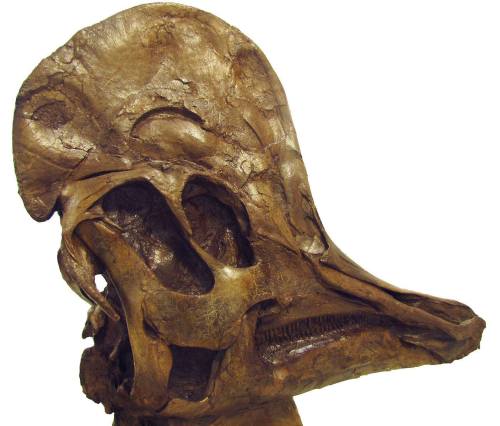CorythosaurusCommon name: ‘Duck Billed’ DinosaurSize: up to 9 m (30 ft) longAge: Upper C
CorythosaurusCommon name: ‘Duck Billed’ DinosaurSize: up to 9 m (30 ft) longAge: Upper Cretaceous (77 – 75.7 million years ago)Geographic range: North AmericaLiked: ChattingDisliked: SwimmingTaxonomy: Animalia > Chordata > Dinosauria > Ornithischia > HadrosauridaeAffectionately known as the 'Duck Billed Dinosaur’, this big herbivore was a communicator.It had a large, bony crest on its head, which amplified its voice, and well-developed ears adapted for hearing low sounds, which allowed to to hear about as well as a modern crocodile (… quite well!). The shape of its scull meant that it would have had a low voice, and differences in the shape of the bony crest on its skull meant that different species of Corythosaur would have had distinctive calls.Its loud voice and good hearing might have allowed groups of Corythosaurs to warn each other of predators, let each other know about food, plot their escape from Jurassic park, and plan to take over the world… you know, dinosaur things.We know a remarkable amount about Corythosaurus, because we have a lot of very well preserved fossils. Some even have the remnants of the dinosaur’s last meal in its stomach - conifer needles, seeds, twigs and fruits. Despite all these skeletons, scientists once thought that Corythosaurus was at least partly aquatic, because it appeared to have webbed feet. It turned out that this 'webbing’ was actually 'padding’, and that Corythosaurus is actually more of a long-distance runner than a swimmer.- OBImages: https://zh.wikipedia.org/wiki/冠龍屬https://fr.m.wikipedia.org/wiki/Fichier:Corythosaurus_Hendrickx2.jpg -- source link
Tumblr Blog : the-earth-story.com
#dinosaur#cretaceous#chorda#hadrosaur#corythosaurus#animal#fossil#fossils#paleontology#fossilfriday#science

